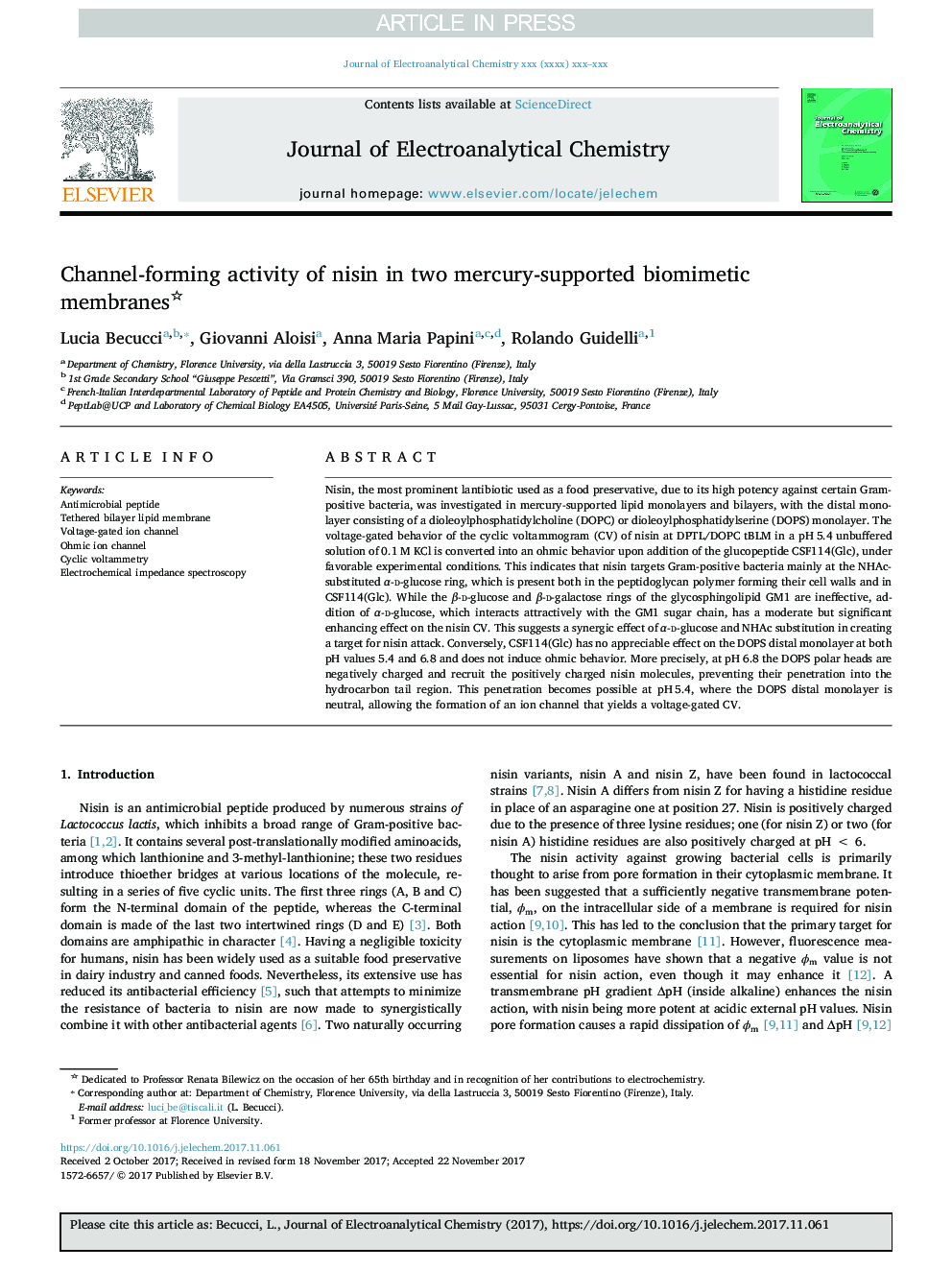| کد مقاله | کد نشریه | سال انتشار | مقاله انگلیسی | نسخه تمام متن |
|---|---|---|---|---|
| 6662096 | 1426563 | 2018 | 8 صفحه PDF | دانلود رایگان |
عنوان انگلیسی مقاله ISI
Channel-forming activity of nisin in two mercury-supported biomimetic membranes
ترجمه فارسی عنوان
فعالیت کانال نیشین در دو غشای بیومیمتیک حمایت شده از جیوه
دانلود مقاله + سفارش ترجمه
دانلود مقاله ISI انگلیسی
رایگان برای ایرانیان
کلمات کلیدی
موضوعات مرتبط
مهندسی و علوم پایه
مهندسی شیمی
مهندسی شیمی (عمومی)
چکیده انگلیسی
Nisin, the most prominent lantibiotic used as a food preservative, due to its high potency against certain Gram-positive bacteria, was investigated in mercury-supported lipid monolayers and bilayers, with the distal monolayer consisting of a dioleoylphosphatidylcholine (DOPC) or dioleoylphosphatidylserine (DOPS) monolayer. The voltage-gated behavior of the cyclic voltammogram (CV) of nisin at DPTL/DOPC tBLM in a pH 5.4 unbuffered solution of 0.1 M KCl is converted into an ohmic behavior upon addition of the glucopeptide CSF114(Glc), under favorable experimental conditions. This indicates that nisin targets Gram-positive bacteria mainly at the NHAc-substituted α-d-glucose ring, which is present both in the peptidoglycan polymer forming their cell walls and in CSF114(Glc). While the β-d-glucose and β-d-galactose rings of the glycosphingolipid GM1 are ineffective, addition of α-d-glucose, which interacts attractively with the GM1 sugar chain, has a moderate but significant enhancing effect on the nisin CV. This suggests a synergic effect of α-d-glucose and NHAc substitution in creating a target for nisin attack. Conversely, CSF114(Glc) has no appreciable effect on the DOPS distal monolayer at both pH values 5.4 and 6.8 and does not induce ohmic behavior. More precisely, at pH 6.8 the DOPS polar heads are negatively charged and recruit the positively charged nisin molecules, preventing their penetration into the hydrocarbon tail region. This penetration becomes possible at pH 5.4, where the DOPS distal monolayer is neutral, allowing the formation of an ion channel that yields a voltage-gated CV.
ناشر
Database: Elsevier - ScienceDirect (ساینس دایرکت)
Journal: Journal of Electroanalytical Chemistry - Volume 812, 1 March 2018, Pages 186-193
Journal: Journal of Electroanalytical Chemistry - Volume 812, 1 March 2018, Pages 186-193
نویسندگان
Lucia Becucci, Giovanni Aloisi, Anna Maria Papini, Rolando Guidelli,
